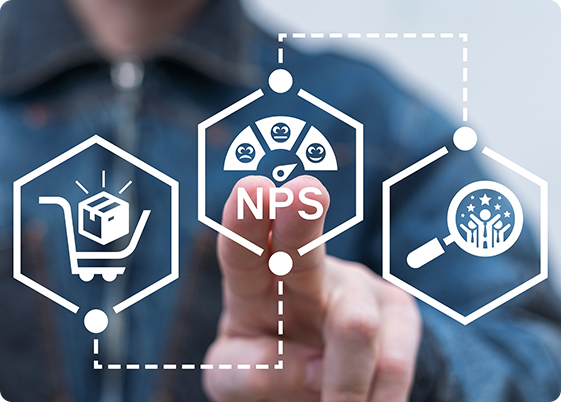
Customer satisfaction isn’t just a metric — it reflects how well your brand meets and exceeds customer expectations. Knowing customer satisfaction and consistently delivering it is crucial in today's highly competitive and fast-paced market.
Building long-term loyalty, improving retention, driving repeat business, and strengthening your brand reputation are critical. Happy customers tend to become repeat loyalists; thus, customer satisfaction becomes a chief motivator for sustainable business success.
Whether you're a customer service manager, business owner, or CX consultant, this in-depth guide will provide actionable strategies, real-world examples, and quantifiable KPIs to enhance satisfaction and retention.
What Is Customer Satisfaction?
Customer satisfaction is the extent to which a firm's products or services align with or exceed customer expectations. It measures customers' satisfaction with their experience, whether it's a purchase, support interaction, or service use.
So, what does customer satisfaction look like in practice? Consider buying food online. The website is easy to use, the order is correct, delivery happens on time, and the food quality matches your expectations. That positive experience exemplifies customer satisfaction.
Customer satisfaction is both a goal and a benchmark that reflects your ability to deliver consistently positive experiences. It’s often quantified through tools like CSAT (Customer Satisfaction Score), NPS, and Customer Effort Score (CES), which are explained later in this blog.
The Importance of Customer Satisfaction
If you're wondering why customer satisfaction matters, keep this in mind: satisfied customers are five times as likely to make a repeat purchase, four times as likely to refer other customers, and seven times as likely to try a new product. However, only 1 out of 26 dissatisfied customers will complain. The remaining ones walk away.
Here’s why customer satisfaction should be a top business priority:
- It reduces churn and enhances customer retention.
- It increases positive word-of-mouth and referrals.
- It strengthens the brand reputation.
- It helps identify service gaps and areas for improvement.
- It boosts employee morale by promoting a customer-first culture.
The importance of customer satisfaction becomes apparent in subscription businesses, call centres, and service industries where continuous interaction is vital.
How to Measure Customer Satisfaction
With an understanding of what is CSAT and why it is crucial, let's move on to how to measure customer satisfaction effectively. Monitoring satisfaction enables businesses to gauge service quality, resolve pain points, and enhance the customer experience in real-time.
Below are the most trustworthy ways to do so:

CSAT (Customer Satisfaction Score)
CSAT is the most common measurement of customer satisfaction. It typically asks customers to rate their satisfaction with a product, service, or interaction on a 1-to-5 scale.
For instance:
"How satisfied were you with your support experience today?"
1 – Very Unsatisfied
5 – Very Satisfied
Understanding how to calculate CSAT is simple:
CSAT (%) = (Number of Satisfied Customers ÷ Total Responses) x 100
If you're wondering why is CSAT important, it's because it gives you direct, transaction-specific feedback you can implement right away.

NPS (Net Promoter Score®)
NPS gauges customer loyalty rather than satisfaction. It inquires, "On a scale from 0 to 10, how likely are you to recommend us to a friend or colleague?"
Customers are divided into three parts:
- Promoters (9–10): Loyal fanatics
- Passives (7–8): Satisfied but not enthusiastic
- Detractors (0–6): Dissatisfied customers
NPS = % of Promoters − % of Detractors
It's a core customer experience, it is significant to how to measure customer experience KPI employed across the world to get insights into brand advocacy. Learn more about how to measure customer experience through our blog.
Customer Feedback Surveys
Qualitative feedback is a valuable way to understand customer sentiments. Surveys can be mailed following purchase, after support calls, or sporadically to track satisfaction trends.
Use open-ended and rating-scale questions to get a complete picture of customer sentiment.
Social Media Monitoring
Your customers are talking, are you listening? Social media sites are the treasure of unfiltered, real-time feedback, frequently highlighting issues before customers even contact your support team.
Monitor mentions, comments, hashtags, and direct messages regularly to see how your brand is viewed and where you can improve.
Customer Effort Score (CES)
CES measures how simple it is for a customer to get something done or fix a problem. It's usually phrased as:
"How easy was it to get the help you needed today?"
Why is CES significant?
Because low effort = high satisfaction.
Customers generally remain loyal to companies that fix problems quickly and easily.

Strategies to Improve Customer Satisfaction
Customer satisfaction cannot be solved once and for all—it requires a consistent, customer-focused approach at every department level. To keep these strategies effective, it's essential to know how to measure customer satisfaction in the first place.
Customer satisfaction must be continually addressed through a company-wide, customer-first approach. Knowing how you measure customer satisfaction is essential to ensuring these plans work. The following are actionable strategies to improve customer satisfaction.
Understand Your Customer Journey
Plot out every touchpoint your customer has with your brand and discover through post-purchase support. Identify where friction points, lengthy wait times, or confusing instructions impact satisfaction.
Customer journey mapping lets you solve problems before they become complaints.
Listen to Your Customers
Don't simply gather feedback; take intentional action based on it. Consistently track customer surveys, support logs, and web comments to uncover trends, persistent complaints, and underserved desires.
Tackle those concerns directly and leverage the knowledge to refine products or services. Most crucially, close the feedback loop by sharing the adjustments with customers to demonstrate that their opinions make a difference.
Offer Proactive Multi-Channel Customer Support
Consumers today anticipate assistance wherever and whenever needed via email, phone, chat, or social media. This builds trust, reduces frustration, and enables your support team to deliver real-time, high-quality service.
It also enables your support team to provide high-quality service in real time, essential to improve customer service strategies.
Act on Customer Feedback
Gathering feedback without acting on it harms trust. Create workflows that direct negative feedback to the appropriate teams in real time and respond to people quickly.
Share updates through 'You asked, we delivered' campaigns to demonstrate to customers that their voice is heard.
Personalise Your User Experience
Generic interactions just aren't good enough anymore. Use data to personalise communications, offers, and product suggestions based on previous behaviour and interests.
Examples include:
- Address customers by name in emails
- Suggest products based on order history
- Provide proactive updates about service disruptions in their region
Follow Up with Your Customers
Follow up with a satisfaction survey or a thank-you note after a support interaction or a purchase. This reinforces goodwill and creates an opportunity to collect additional feedback.

Challenges in Maintaining Customer Satisfaction
Though the benefits of measuring customer satisfaction are obvious, sustaining high satisfaction has its pitfalls. Here are some typical obstacles and how to get past them:
Managing Customer Expectations
Customers arrive with different expectations, influenced by prior experience or comparative offerings from others. Even when the service is good, overly high expectations will result in disappointment.
Solution: Be honest about what your product or support staff can and cannot accomplish. Be upfront about timelines and expectations early on.
Handling Angry Customers
Understanding a customer’s issue and responding with empathy can significantly improve their perception of your brand. A single bad experience can create a negative review or loss of loyalty. Responding to complaints with compassion and urgency is paramount.
Solution: Train staff in conflict resolution, active listening, and tone management. Have well-defined escalation procedures in place.
Juggling Multiple Callers at Once
In call centre settings, agents tend to handle multiple requests at once. This can result in increased wait times or lost calls. Establish clear protocols to streamline the process and prevent missed information.
Solution: Invest in technology such as chatbots for FAQs, callback features, and solid CRM systems that offer customer context.
Interested in a career in customer support? Explore customer service jobs at HGS UK.
Having Prompt Response Times
The modern digital customer wants instant responses. Delays—even minutes—can lead to dissatisfaction.
Solution: Leverage automation, auto-responders, and staff analytics to ensure quick response times without compromising quality.
Conclusion
Customer satisfaction is the bedrock of long-term business success. It's not just about fixing problems; it's about listening to needs, anticipating expectations, and forging lasting bonds.
Mastering the concept of customer satisfaction and tracking key performance indicators like CSAT, NPS, and CES helps drive greater satisfaction. Through ongoing methodological development and regular monitoring of KPIs, you can enhance the customer experience at every touchpoint with your company.
Whether you're building a CX strategy or exploring career opportunities in support, HGS UK remains committed to delivering customer-first solutions that drive measurable satisfaction and long-term loyalty.
Focus on satisfaction and be rewarded with loyal customers and passionate advocates.
Frequently Asked Questions (FAQs)
What are the three pillars of customer satisfaction?
The three pillars are product quality, service quality, and emotional connection. Collectively, they define how a customer perceives your brand.
What are the four levels of customer satisfaction?
The four levels are: basic (meets expectations), expected (satisfies needs), desired (delights customers), and unanticipated (surpasses expectations).
How does customer satisfaction affect business growth?
Happy customers are more inclined to make repeat purchases, refer, leave great feedback, and drive reduced churn, fueling long-term business growth.
Can technology improve customer satisfaction?
Yes, definitely. Tech increases support availability, makes experiences more personal, simplifies routine work, and accelerates resolution, resulting in increased satisfaction.
 UK
UK Canada
Canada Colombia
Colombia India
India Jamaica
Jamaica Philippines
Philippines US
US SA
SA
